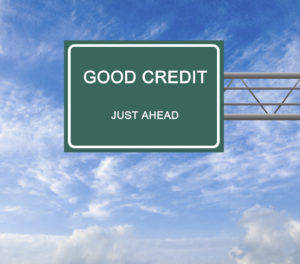Consumer Credit Guide
Using credit the right way to achieve a good score without risking debt problems.
Most of us never received any formal education on consumer credit. Few provinces offer personal finance education and some, like Ontario, only encourage teachers to roll financial literacy lessons into other core subjects.[1] And while some universities are stepping up to offer personal finance courses,[2] most adults have learned what they know about credit through sheer trial and error. As a result, Canadians are facing record levels of debt, including an average household credit card balance of $4,154.[3]
The good news is that using credit doesn’t need to come at the expense of financial stability. You can learn to use credit in a financially healthy way that minimizes the risk of debt problems while maximizing your credit score. This guide will teach you everything you need to know about consumer credit to be successful.
First, here’s why credit card debt is such a challenge…
Credit cards are certainly not the only type of consumer credit, but they are often the biggest source of financial challenges and stress. Credit cards are a type of revolving credit, which means the more you charge, the more you owe each month. When you overcharge, your required monthly payments increase, which makes it hard to keep a balanced budget. It also makes it difficult to save, which often forces you to use credit cards to cover unexpected expenses and emergencies. It’s a vicious cycle that can be tough to break on your own.
Research interest rates of different lending institutions. Ask questions and understand how flexible the repayment terms are going to be. – Janine Rogan Click To Tweet|
If you’re stuck in a cycle of debt, we can help. Talk to a trained credit counsellor to discuss your options for relief. |
Free Evaluation |
Understanding different types of consumer credit
The first step to taking control of your credit life is understanding how different types of consumer credit and debt work. Anytime you use a credit product, it creates a debt that you’re obligated to pay back. Different credit products have different terms for repayment.
There are two key factors that distinguish different types of credit:
- Closed-end installment vs open-end revolving
- Secured vs unsecured
Closed-end installment vs open-end revolving
With closed-end credit, you take out a set amount of money in a single lump sum. You pay the debt back in installments (fixed monthly payments) over a set period of time, hence the term “installment.” By contrast, open-end credit offers you a credit line that you can borrow against as needed. The monthly payment requirements change, depending on how much you owe, which is why it’s referred to as revolving.
Secured vs unsecured
The second factor that determines the type of credit you have depends on whether it requires collateral. Secured credit means a debt is secured with collateral, meaning you must put something up to get credit. If you don’t pay back the debt, the lender can take the collateral. Unsecured debt has no collateral.
Common types of credit products
This table provides some helpful examples of different types of consumer credit products.
| Credit type | Products |
|---|---|
| Closed-end secured credit | Mortgages, home equity loans, auto loans |
| Open-end secured credit | Home Equity Line of Credit (HELOC), secured credit cards |
| Closed-end unsecured credit | Personal loans, student loans |
| Open-end unsecured credit | Personal line of credit (LOC), most credit cards |
People often think that open-end unsecured credit only refers to the majority of credit cards (minus secured credit cards, which require a cash deposit). However, many banks also offer personal lines of credit (LOCs). These often provide lower interest rates versus credit cards.
How credit cards work

Whether you’re just starting out or you’re trying to develop better financial habits, it’s important to understand how credit cards work. Then you can decide if you want to incorporate credit cards as part of your financial strategy or if you feel you’re better off without them.
These resources understand these types of accounts and how to use them effectively:
How interest rates work
A big part of what makes credit cards so challenging to manage is the high interest rates. For example, the average interest rate on a mortgage loan currently ranges from 3.5-5.5 percent, depending on the term.[4] By contrast, the average interest rate on a credit card is around 19%.[5]
For most types of credit, interest rates are expressed as an annual percentage rate. APR represents the total yearly cost of using credit. On credit cards, APR is equivalent to the annual interest rate on the account. On loans, APR includes the interest rate, as well as some fees.
Learn more about how credit card interest works »
Finding solutions to combat high APR
Credit cards generally have high interest rates, which can make it difficult to pay off your balances. The good news is that there is a range of solutions that can help you lower the APR applied to your debt. Reducing APR will help you pay off the principal faster – that’s the actual debt you owe.
|
If high APR is making it difficult to achieve your goal of becoming debt free, we can help. Talk to a trained credit counsellor now for a free debt evaluation today. |
Get Help Now |
Managing credit card debt
In a perfect world, you should pay off credit card balances in-full every month. This allows you to minimize interest charges and avoid problems with credit card debt. However, in some instances you may run up a balance, either by making a big purchase or for special occasions like making reservations for a vacation. When this happens, you should try to focus any extra cash you have available in your budget to pay off the balance as quickly as possible.
Of course, in some cases, you find yourself in a situation where you’re carrying multiple credit card balances at once. This can create stress on your budget because it forces you to juggle multiple credit card bills. As those balances increase, your monthly minimum required payments will increase, too.
Before you begin to face financial hardship, you need to be proactive and find solutions. These resources can help:
Maintaining your credit profile
Once you start to use credit, you begin to build a credit profile. Your profile is made of two parts:
- A consumer credit report
- Your credit score
Consumer credit reports
Your credit report is a running history of your use of loans and credit cards. There are two credit bureaus that maintain consumer credit reports – Equifax Canada and TransUnion Canada. Each bureau maintains its own proprietary version of your report and has different rules for what you need to do to download your report.
Lenders use your credit score to assess your creditworthiness. A very good to excellent credit score means you can qualify for loans at competitive rates. – Enoch Omololu, Savvy New Canadians Click To TweetLearn more about your credit report »
Consumer credit scores
Your credit score is a three-digit number that helps lenders and creditors understand your risk as a borrower. Your score is calculated based on the information contained in your credit report. A high credit score means you have a history of repaying debt on time. A low credit score indicates that you may have had trouble with credit in the past and could be more likely to default. Achieving and maintaining a high score is essential to qualify for low interest rates and the best terms on new financing.
Know your credit score. This simple three-digit number will have a big impact on the chances of you receiving a loan. – Dylan Houlihan, Swift Salary Click To TweetRepairing your credit
Although many consumers trust that the credit bureaus will maintain accurate information about their credit history, mistakes are possible. A consumer credit report may contain things like inaccurate credit history, outdated account statuses, and duplicate accounts. All of these mistakes can damage your credit score, which is why it’s important for you to review your report regularly.
If you find an error in your report, you have a right to dispute the information with the credit bureau that issued the report. This process is known as credit repair.
Learn how to repair your credit for free »
Preventing identity theft
Another key part of maintaining a high credit score is taking steps to prevent and monitor for identity theft. There’s no limit to the threats you face with people trying to steal your identity and personal data, from unauthorized account access to using your personal information to open new accounts. You need to be proactive about protecting your identity and understand what steps you can take to recover quickly if you find you’re a victim of ID theft.
Protection your personal information against identity theft »
Know your rights!
There is a range of laws that protect consumer credit rights in Canada. These laws help ensure that all consumers are treated fairly and equally when it comes to credit. They also protect you from harassing and abusive lending and collection practices. Knowing your rights as a consumer is essential as you work with different companies to achieve your goals.
|
Do you still have questions about how consumer credit works? Ask our financial coaches now to get the information you need. |
Ask a Question |



